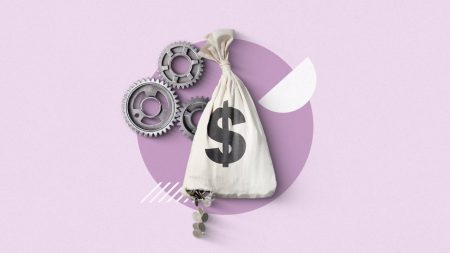Key takeaways
- Backed by assets, secured business lines of credit may offer favorable rates and terms than unsecured lines of credit
- Unsecured business lines may still require a personal guarantee
- You can use a business line of credit to cover inventory, payroll, equipment purchases, repairs and more
If you need access to short-term funds or want to build credit, a business line of credit may be the answer. While a business loan gives you a lump sum of money that you pay back over time with interest, a business line of credit is more like a business credit card. It’s often a revolving line of credit that you can repeatedly access and only have to pay interest on the funds you borrow.
Business lines of credit typically have higher interest rates than business loans, come with lower borrowing limits and have shorter repayment periods. But the best business lines of credit can be easier to qualify for and can better fit small business owners looking for ways to manage their cash flow.
Here’s a look at the types of lines of credit you can get and what they can be used for.
Different types of credit lines for businesses
Business lines of credit can be secured or unsecured, either of which can be beneficial based on your funding needs.
Secured business lines of credit
The first type of line of credit is a secured credit line, which requires business assets to back the credit line.
When you secure a loan or line of credit, the lender places a lien on the collateral. This is a legal notice that gives the lender the right to take your asset if you stop making payments. The lender can then sell it to recover any debt you owe.
Putting up some collateral for your business line of credit can make it easier to get approved. This makes them more accessible to business owners with poor credit, startups and other business owners that may not qualify for an unsecured line of credit. Securing the line of credit with collateral can also lead to more favorable terms, like a lower interest rate, increased loan limit or better repayment terms.
Yet securing a loan also means exposing the asset to the risk of seizure if you default on the line of credit. So, business owners should think carefully about what they use to secure their business line of credit. The collateral you could use for this type of credit line includes:
- Commercial or personal real estate
- Company equipment or vehicles
- Inventory
- Cash
- Investments (such as bonds or stocks)
- Outstanding invoices
- Future sales or contracts
- Personal assets
- Blanket lien on all business assets
Unsecured business lines of credit
The second type of business line of credit is an unsecured line, which doesn’t need collateral to back the loan. That makes it riskier for the lender, which is why business lines of credit usually come with a higher interest rate and lower lending limits than secured lines of credit.
Even though you don’t have to put up collateral, the lender may require you to sign a personal guarantee. This means you are still responsible for paying back the debt, and the lender can sue you for any unpaid balance. Even if you establish your business as a limited liability company, you are still liable for the debt once you sign a personal guarantee.
On top of all of this, an unsecured business line of credit can be harder to qualify for than a secured one. Because it heightens the risk for the lender, you generally need to show good credit and that your business has been operating for a while with a steady annual revenue.
Revolving vs. non-revolving business lines of credit
Other line of credit types include revolving or non-revolving business lines of credit. Most business lines of credit are revolving, which means that you can borrow money from the available amount repeatedly. As you repay a loan, you can borrow from the credit line as many times as you need, as long as you don’t surpass the borrowing limit (called the credit limit).
In some cases, lenders will offer a non-revolving business line of credit. These lines of credit preapprove you for a loan up to a certain amount. You can use part or all of the loan for your purchases. But once you use the loan once, you won’t be able to borrow from it again.
The benefit is knowing how much you can spend on purchases since the lender preapproved you.
SBA CAPLines are an example of business lines of credit, offering both revolving and non-revolving lines. CAPLines are designed to help businesses that need funding for operational expenses, including seasonal expenses or specific work contracts.
Bankrate insight
- Personal information about yourself
- Business formation documents
- Employer identification number (EIN)
- Business bank statements
- Business plan
- Business or personal credit score
- Details about existing loans
What can a business line of credit be used for?
You can use a business line of credit for nearly any purpose. You simply withdraw the money when you need it and pay any draw fees. But no matter what you use the credit line for, make sure you make a realistic plan for repaying the loan so that you can responsibly manage your line of credit.
You can use a business line of credit to:
Buy inventory
You may need products on your shelves before you’re able to turn a profit from your business. You can withdraw the amount needed to stock up on inventory and repay the business line of credit as you make sales.
Cover payroll
If you haven’t received your accounts receivable and need money to pay your employees, you can draw from your business line of credit. Since payroll is an ongoing expense, you don’t want to rely too heavily on a business line of credit unless you have a plan to repay the loan. You’ll want to pay the line of credit back as soon as you’ve received the money you’re expecting from customers or clients.
Buy or repair equipment
Your business might have equipment needs that will improve efficiency and help gain more sales. In these cases, using your business line of credit to buy or repair equipment can be a good investment. You will want to plan to repay the line of credit from your sales. It may help to add the monthly or weekly payment into your business budget so that you can prioritize the payments.
Improve cash flow
You could use your business line of credit to pay for monthly operational expenses and payroll until you receive your accounts receivable. Then, you can pay back the amount used, replenishing the line of credit to use again.
Using the business line of credit for these expenses can help you improve cash flow if your sales come in on an uneven schedule or if clients pay invoices 30 to 90 days later than the invoice date. Just be sure to keep track of when revenue will come in so that you know when you can pay back the line of credit.
You can get a business line of credit from many types of lenders, including traditional banks and credit unions to online lenders and marketplaces.
Long-established banks like Bank of America or Wells Fargo provide lines of credit. But, the application process with traditional banks is often long, and it can take days or weeks to get funding.
Newer players in the game, including fintech companies like Fundible or Backd, often offer faster applications and funding within hours or days. The downside of online lenders is that interest rates are usually much higher than traditional banks.
Ultimately, the key is to compare the credit limits, types of lines of credit offered, repayment terms and the associated fees to find the right option for your business. You can estimate the loan costs with a business loan calculator if you have a general idea of interest rates and terms.
Bankrate insight
- Online lenders: Employer firms reported high interest rates (55%) and unfavorable repayment terms (42%)
- Large and small banks: Employer firms reported long waits for credit decisions and funding (40%) and difficult application process (40%)
The main draw of business lines of credit is that once approved, you can use that credit whenever you need it. Typically, you can also borrow against the line multiple times up to the borrowing limit (unless you get a non-revolving line). Yet some lines of credit keep repayments short and may come with extra fees that you won’t see with other business loans.
Here’s a look at the top pros and cons of business lines of credit.
Pros
- Reusable credit. Most lines of credit are like having a business loan on standby. Once approved, you can borrow from it at any time and receive funds quickly. Then, you can reuse the credit as you pay down past loans.
- Improves cash flow. A business line of credit can ensure that you pay bills and payroll on time, even if you have an uneven flow of revenue.
- Accessible requirements to apply. Many lenders loosen requirements to get a line of credit versus other loans, such as accepting fair or bad credit.
- Builds a relationship with the lender. If you use the line of credit regularly and responsibly, you will build a relationship with the lender. Then, you can use the same lender for future business loans and potentially be approved for the loan more quickly than if you signed up with a new lender.
Cons
- Additional fees. Some lines of credit include costs that aren’t charged with other business loans. For example, some charge a draw fee each time you withdraw funds or a fixed monthly service fee.
- May have short repayment terms. Lines of credit for high-risk borrowers offer short terms from six to 24 months, although some lines go higher, like five years.
- May charge high interest rates. You may see business line of credit interest rates range from 8 percent to 60 percent or more. These rates can be higher than term loans from a bank, which can range from 5.75 percent to 12 percent. That said, online lenders may charge higher interest rates for term loans.
- No grace period, like credit cards.Lines of credit act similar to a business credit card. But they don’t offer a grace period that lets you pay off the loan without interest like credit cards do.
Bankrate insight
A business line of credit can be helpful to lean on when you need extra capital for your business. But it’s best used when you can repay the loan quickly. You’ll need to responsibly manage how much you borrow from your line of credit and when you can repay it since you can easily overborrow and get into a cycle of debt.
Alternatives to business lines of credit
If you need a high loan amount or don’t need ongoing credit, a business line of credit may not work for you. Consider one of these types of loans instead:
- SBA loans: SBA loans are offered through approved lenders and backed by the Small Business Administration. These loans tend to have long repayment terms, and the SBA caps how much interest the lenders can charge.
- Term loans: Term loans are used for a specific purpose outlined to the lender when you apply. They have a set timeline for when you’ll repay the loan, and they calculate interest with each monthly payment. These loans can be short-term, such as 24 months or less, or long-term, going up to 10 years.
- Business credit cards: Business credit cards work similarly to a revolving business line of credit, replenishing the amount you can borrow as you pay it back. But if you pay off the credit card in full each month, you’ll get a grace period of at least 21 days to repay future loans. Business credit cards tend to have high APRs, such as 18 percent to 35 percent.
- Invoice financing: This loan pays you an advance based on your unpaid invoices from clients, up to 90 percent of the invoice amount. You repay the loan when you get paid by the client.
- Invoice factoring: This loan works similarly to invoice financing, except that the factoring company buys the invoices from you and handles collecting them. Note that you may pay higher fees the longer that the client doesn’t pay the invoice.
- Merchant cash advances: This alternative type of business loan gives you an advance on your future sales, usually based on future credit or debit card sales. But you may have to pay a percentage of your sales daily or weekly, and borrowing costs can be high like 50 percent interest or more.
Bottom line
If your company needs short-term financing, a business line of credit offers you an option somewhere between a business loan and a business credit card.
The types of lines of credit you can choose are either unsecured or secured by business assets. Secured lines help you get approved with bad credit or for favorable terms, while unsecured lines pose less risk that you’ll lose valuable assets if you miss payments.
You’ll pay more in interest than you would with the business loan, but you’ll have an easier, faster time securing funding.
-
To get a business line of credit as an LLC, you’ll need to go through the lender’s application process. Generally, you’ll need to provide your federal employer identification number (EIN) and your own Social Security number so the lender can check your credit score. You should also be prepared to show the lender your business formation documents, bank statements and other financial records.
-
Yes, as you pay back the business line of credit on time, it can help you build your credit score. Make sure to pay your balance on time each month and keep your credit utilization ratio low, which is the amount of credit you use compared to your credit limit.<br /><br />If improving your business credit is important to you, double-check that the lender reports to a credit bureau. Not all lenders do, especially online lenders. You’ll need to find a bureau-reporting lender for the line of credit to impact your score.
-
Startup businesses can get a business line of credit, though it will depend on the lender. Most lenders require a business to be operating for one to three years. Some online lenders only require six months. If you’ve been in operation for less than six months, a business credit card may be a better fit.
Read the full article here












